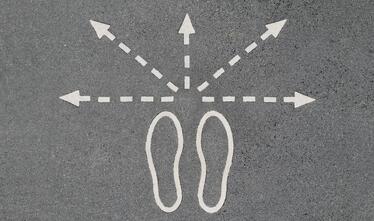 Warning: This post contains spoilers for George R.R. Martin’s A Song of Ice and Fire and HBO’s Game of Thrones.
Warning: This post contains spoilers for George R.R. Martin’s A Song of Ice and Fire and HBO’s Game of Thrones.
“When you play the game of thrones, you win or you die.” This is the message of popular book series A Song of Ice and Fire and hit HBO TV series Game of Thrones. In the fictional world of Westeros, you learn pretty quickly that honor, duty, and loyalty will get you nowhere.As market researchers, we can learn a lot about loyalty from Westeros. There are more kinds of loyalty than there are self-proclaimed kings of the 7 kingdoms—and just like those kings (sorry, Tommen), these types of loyalty aren’t all created equal. Luckily, we have a way of categorizing (and then quantifying the value) of different types of loyalty—a concept I’ll illustrate using some of our favorite Westerosi characters.
In the world of loyalty measurement, everyone starts in the first archetype, which is just plain “Loyal.” Assuming that everyone is loyal in some way is certainly a dangerous assumption in Westeros, but we’ll take our chances and put everyone who isn’t a Wildling into that category to start.
True Loyal: You can argue that as the sworn sword of Renly Baratheon (deceased) and Catelyn Stark (also deceased), Brienne of Tarth has not been terribly successful. But, you can’t deny that she’s gone out of her way to fulfill her vow of reuniting the Stark girls. Come the Hound or high-water, she’s devoted. This is the type of customer (or sworn sword) we’d all like to have in our corner.
At-Risk Loyal: Varys may say he’s true to the 7 Kingdoms, but the former Master of Secrets’ loyalty extends only so far. . .which Tywin Lannister (RIP!) learned a little too late. In Westeros, and in the marketplace, this type of loyalty is the one you’ll have to work to hold on to.
Deal Loyal: Your customer may enjoy your product as much as Bronn enjoyed being with Tyrion, but don’t forget that sell swords and Deal Loyal customers are primarily motivated by bags of gold—or discounts.
Uninvolved: This could have described our friends in Dorne until very recently (thanks, Cersei), but perhaps the most accurate example of the Uninvolved are the average citizens of Westeros. These people don’t hold much allegiance for any king—they just want to make it through another winter with their heads attached. It’s the same (well, not exactly the same) for your uninvolved customer. They use your brand but are pretty indifferent overall.
Distribution Loyal: Petyr Baelish’s allegiance is questionable at best. Baelish (who is better known as Littlefinger) spreads his loyalty across the kingdom, manipulating people and resources to slowly claw his way into power. He may be loyal to House Tully (and the Starks by extension), but we know he’s also made major plays for the Lannisters. It’s all about the end game for Littlefinger, which is why he’ll use people as a means to an end and then switch when something better comes along.
Captive Loyal: Poor, poor Sansa. Can’t a girl catch a break? She’s had three fiancés and two husbands, and she's still held prisoner by her claim to the North. While she’s recently learned how to use her circumstances to her advantage, I’ll go out on a limb and say she’s probably on the lookout for a better option—the North remembers. Like Sansa, Captive Loyals aren’t satisfied with your product, but they’re likely to continue using it for the time being.
Where does your loyalty lie?
Heidi Hitchen is a true loyalist to House Stark. She’ll continue to root for the King in the North until the White Walkers come for her. Winter is coming!
Watch our recent webinar to learn about our results-focused emotional measurement approach we call EMPACT℠: Emotional Impact Analysis. Put away the brain scans and learn how we use emotion to inform a range of business challenges, including marketing, customer experience, customer loyalty, and product development.



